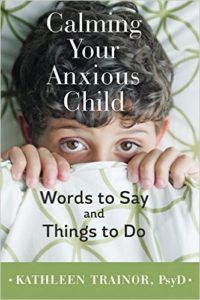 Sure, good storytelling is a must-have for memoir, novels or narrative nonfiction.
Sure, good storytelling is a must-have for memoir, novels or narrative nonfiction.
But have you thought about how storytelling can bring your self-help or how-to book to life? After all, it’s not terribly inspiring to be told what to do without any context. A story, however, engages your reader in a vicarious experience and, in the case of a self-help book, can motivate your readers to take action and embody the lessons, skills and wisdom your book has to offer.
So, how do you tell a good story?
[bctt tweet=”5 Tips for Powerful Storytelling in Nonfiction Writing”]

- Set the Scene: A revealing detail or two will help readers understand exactly how your character feels and why the following events have such an impact. Perhaps your character just lost her job, or landed her first big account, for instance. In On the Verge, Cara Bradley brings the concept of “SoulForce” alive with a scene of her running track in college, drawing the reader into a vicarious experience.
- Employ All Your Senses: We tend to stick with the visual and underplay the other senses. A striking sensual detail–smell, taste or touch–can have even more impact than a visual one especially for that reason: a hint of lavender, the taste of lemon rind, the feel of a poodle’s curly fur.
 Use Examples: In Calming Your Anxious Child, Dr. Kathleen Trainor begins each chapter with an example of a child that illustrates a particular type of anxious child for a specific age group. By beginning the chapter with examples, she can refer back to the story for each step and teaching point in the chapter.
Use Examples: In Calming Your Anxious Child, Dr. Kathleen Trainor begins each chapter with an example of a child that illustrates a particular type of anxious child for a specific age group. By beginning the chapter with examples, she can refer back to the story for each step and teaching point in the chapter.- Develop Character: Even in a short anecdote, you can give the person a name, an unusual and fitting job or share quirky details about the person. If you are concerned about confidentiality, you can change details, such as name and occupation, and mention that the anecdotes are composites in your Introduction.
- Show the Transformation: Tell a reader what to do and not much happens. Show how these steps have helped others–the wretched before and the “happily ever after”–and now your readers are motivated to make a change and take action.
And here are some of the wonderful side effects of storytelling:
[bctt tweet=”7 Benefits of Storytelling in a Self-help or How-to Book”]
- Engages readers emotionally and helps them stick with it.
- Entertains readers and makes the book the kind people want to share with others.
- Brings the material to life so readers can apply the information more easily to their own lives.
- Adds credibility.
- Inspires you as you write.
- The “P-Factor”: Makes you more prolific.
#6 may be a bit of a surprise. I was surprised myself. The idea came out of a recent conversation with author Chris Spurvey, whose book It’s Time to Sell sold 10,000 copies in its first month.
 I was amazed when Chris shared that he owes his prolific blog and article writing (75 plus articles in a bit over a year) to a practice related to storytelling, called “conscious stream of thought.”
I was amazed when Chris shared that he owes his prolific blog and article writing (75 plus articles in a bit over a year) to a practice related to storytelling, called “conscious stream of thought.” I think again of Dr. Kathleen Trainor, a Bring Your Book to Life Program graduate whose book, Calming Your Anxious Child, published by Johns Hopkins University Press comes out in June. Each chapter begins with a story that captures many aspects of a reader’s situation. While the steps in her method are crucial, it’s the stories I remember and that remind me how to help my child when he feels anxious about something.
I think again of Dr. Kathleen Trainor, a Bring Your Book to Life Program graduate whose book, Calming Your Anxious Child, published by Johns Hopkins University Press comes out in June. Each chapter begins with a story that captures many aspects of a reader’s situation. While the steps in her method are crucial, it’s the stories I remember and that remind me how to help my child when he feels anxious about something.
